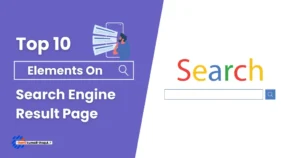SEO is a process to improve a website’s visibility on search engine results pages (SERPs). But there are different approaches to SEO, each with its methods and risks. And if you are wondering which method is best for you?
Then, in this article, we will explore White Hat, Black Hat, and Gray Hat SEO. Differences, techniques, risks, and benefits for you to decide and choose one method for SEO success.
Types
Search Engine Optimization techniques fall into 3 categories:
- White Hat (ethical),
- Black Hat (unethical), and
- Gray Hat (a mix of both).
| Factor | White Hat SEO | Grey Hat SEO | Black Hat SEO |
|---|---|---|---|
| Rules | Follows | Partially | Violates |
| Keyword Use | Natural | Moderate manipulation | Keyword stuffing |
| Content Quality | High, user-focused | Mixed quality | Low, often spammy |
| Backlink Strategy | Organic, high-quality links | Some paid links or link exchanges | Link farms, spammy links |
| User Experience | Positive, focused on usability | Mixed; may affect usability | Poor, prioritizes ranking over UX |
| Penalty Risk | Low | Medium | Very high |
| Ranking Timing | Slow but stable | Moderate speed | Fast, often unstable |
| Cost | Moderate to high | Moderate | Low, with potential long-term losses |
White Hat SEO
White Hat SEO strategy focuses on long-term growth by following Google’s and other search engine guidelines.
Ethical SEO experts focus on ethical practices, good user experience, and quality content that meets user needs.
Avoiding these shortcuts or risky tactics increases the website’s authority and trust naturally.
Popular Example: Some might consider Semrush acquiring Search Engine Land as GrayHat but this acquisition is a business strategy that aligns with traditional, ethical practices.
Efforts
Of all SEO tactics, White Hat SEO takes the most time and effort, as it focuses on steady and genuine growth.
Building trust with users and search engines takes time. While it may be challenging, this approach leads to lasting, meaningful results and strong credibility over time.
Benefits
- Organic Results: Rankings are less likely to drop and are long-term.
- Trust and Credibility: Gain the trust of both search engines and users.
- Better User Experience: Focus on content that satisfies user intent and improves site usability.
- Penalties Free: As guidelines are followed the risk of penalties from search engine updates is reduced.
Risks
- Slow Organic Growth: It takes time, as it relies on organic growth without shortcuts.
- More Effort Needed: This approach requires consistent, high-quality content and regular optimization.
- Competition: Competing against sites in highly competitive markets can be challenging.
- Algorithm Updates: Even compliant sites can be affected by algorithm changes.
Examples
1. High-Quality Content
Writing helpful content is not enough it must also satisfy the user’s intent.
The article must provide relevant and helpful information the user is looking for.
Providing the best search experience to readers is a top priority for Search Engines as of now. Without having to go back and forth on different websites to find a specific answer.
2. Ethical Building Link
Backlinks have always been a major ranking factor on Search Engines like Google or Bing.
But good quality backlinks are not easy to build and getting Backlinks using whitehat SEO might seem hard.
But it’s not the case, below is an example of how you can create 100’s backlinks using Ethical Building Links:
- Creating Linkable Assets: Publish high-quality content (Infographics, Guides, Articles) that others want to use as links.
- Industry Studies and Original Research: Publish original or updated case studies in your industry to attract backlinks as a source.
- Skyscraper Technique: Create better content than your competitor to ask to replace it with the original.
- Broken Link Building: Find broken links (404) on relevant sites and suggest your content as a replacement
- Guest Posting: Write for other websites.
- HARO (Connectively): Be a source or an expert in your topic and help a reporter/magazine/journalist in your industry get mentions and backlinks.
- Press Releases: Distribute newsworthy press releases that can lead to backlinks from media outlets.
- Interviews: Interview industry leaders and get backlinks when they share the content.
- Testimonials and Reviews: Write testimonials for products/services you use, to link back to your site.
- Sponsor: Find relevant events, charities, or local organizations to sponsor, they often list your and your site.
- Offer Free Tools or Resources: Provide free tools or resources that are helpful which often is rewarded with a backlink.
3. User Experience Optimization
Once a user visits your website, they should be able to navigate what they are looking for without any trouble.
A good UX includes design related such as mobile responsiveness, site speed, proper navigation, readability with good fonts, and fewer Pop-Ups and ads.
Black Hat SEO

Black Hat SEO tactics aim for quick results and are the exact opposite of whitehat, it involves manipulation within or external websites to get a higher ranking in search engines.
Black Hat SEO tactics aim for quick results and are the exact opposite of whitehat, manipulate search engine rankings
Popular Example: In 2006, BMW Germany used doorway pages – heavily optimized for the keyword “used cars” but once users clicked on these pages, they were redirected to other, more generic BMW content.
A report by Matt Cutts stated that Google penalized BMW’s German website by removing it from the search index temporarily.
Efforts
Black-Hat SEO promises fast results but relies on unethical practices that break search engine rules.
These tactics aim to boost rankings quickly, but they come with significant risks, including penalties.
Although it may seem appealing for short-term gains, the long-term consequences are severe, as search engines are constantly updating their algorithms to catch and penalize such tactics
Risks
- Getting hit by Penalties: Search engines like Google can penalize or ban sites using black hat SEO, leading to lost rankings and traffic.
- Temporary Outcomes: Blackhat tactics may work temporarily, but they often lead to volatile and unpredictable long-term results.
- Loss of Organic Traffic: If penalized, a website may lose all organic search traffic, leading to a significant drop in visibility and business.
- Legal Consequences: Some blackhat methods, like cloaking or misleading users, could violate search engine guidelines or even legal regulations, leading to lawsuits or legal troubles.
Common techniques
- Keyword Stuffing: To control spam and ranking manipulation using unnatural and unreadable content by adding keywords google introduced Updates like Panda, Penguin, and others.
- Cloaking: To manipulate keyword ranking by simply tricking search engines by showing different content to search engines and users.
- Doorway Pages: Creating multiple low-quality pages with the primary goal of ranking for specific search queries, then redirecting users to a different page or site.
- Link Schemes: Also known as Link Spam is buying or selling, Link Exchange, and Creating links using automation.
- Content Scraping: Copying content from top websites and publishing it as your own.
- AI-Generated Content: Creating a large volume of content using AI; like ChatGPT, Perplexity, Gemini, or others to increase keyword density or target a wide range of search terms.
Interested in Search Engine Optimization? Here is how you can start as SEO Expert.
GrayHat SEO

Gray Hat SEO techniques follow a combination of White Hat (ethical) and Black Hat (unethical) SEO practices.
Professionals who stay somewhere in the middle, following rules but still pushing boundaries to gain an advantage in SERPs.
These methods are not “against the rules,” yet they carry some risk. As search engines get better at detecting these tactics, the risk of penalties increases.
Especially if guidelines change or they view these methods as manipulative.
Popular Example: The New York Times exposes J.C. Penney’s Link Scheme in 2011, According to the report.
Thousands of backlinks from unrelated and low-quality sites point to its high-value product pages like “dresses,” “bedding,” and “furniture.”
Example
Buying links is a common gray hat tactic. While link-building is a valid SEO strategy, paying for links goes against Google’s guidelines.
Efforts
Gray Hat SEO requires consistent effort to balance risk and reward.
Compared to Black Hat, Gray Hat SEO carries less risk. However, unlike White Hat, it doesn’t rely solely on organic growth, allowing for faster initial results.
Still, it requires regular updates and careful monitoring to stay within safe limits and avoid penalties.
Benefits
- Faster Results: Deliver quicker results compared to White Hat techniques.
- Less Risk: The risk is lower compared to unethical Black Hat methods.
- Loopholes: Creative tactics and loopholes to rank without breaking guidelines.
- Competitive Advantage: Helps website rank faster in competitive areas where White Hat SEO takes longer.
Risks
- Back to Zero: If sites are found violating guidelines or using manipulative tactics are de-indexed.
- Future Updates: It may work for a while, but that can change as search engines evolve their algorithms.
- Position Not Fixed: Results may not be long-lasting, and the site’s position could fluctuate over time.
- Reputation Damage: A brand might lose its reputation by getting hit by an update.





